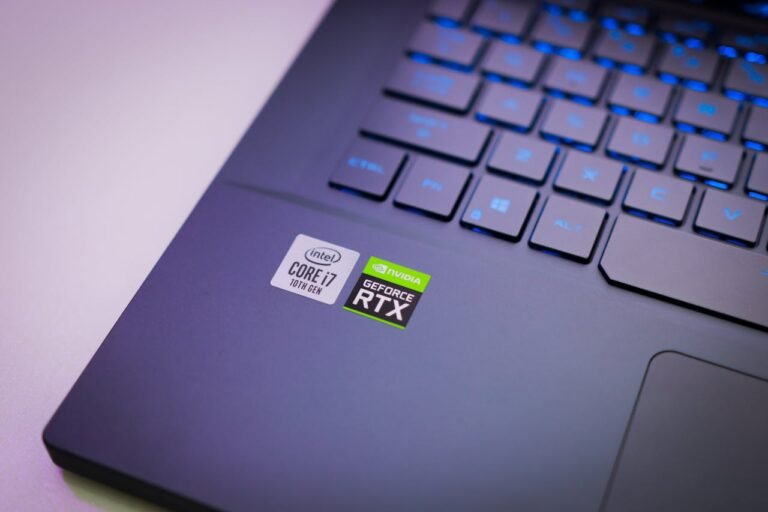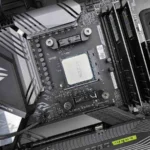Ever wondered if an integrated GPU is enough for coding and development? You’re not alone. Many developers face the same question, unsure if their setup can handle demanding tasks like compiling code or running virtual machines.
The good news? You might not need a costly dedicated GPU after all. An integrated GPU can often offer a smooth, efficient workflow for most coding needs, especially if you’re on a budget or prefer a portable setup.
Think about how much simpler it’d be to get started without overspending or worrying about hardware upgrades. In this post, I’ll show you how an integrated GPU could be the perfect match for your development needs and when it makes sense to choose one.
Let’s dive in!
Table of Contents
What Is an Integrated GPU and Why Does It Matter for Developers?

An Integrated Graphics Unit (IGPU) is a graphics processor that shares the system’s main memory, built directly into the CPU. Unlike discrete GPUs, integrated GPUs don’t have dedicated memory but still offer sufficient power for various tasks, especially in modern processors like the Intel Iris Xe, AMD Radeon Vega, and Apple M-series chips.
Integrated GPUs are often seen in laptops and compact PCs, making them ideal for developers who need a balance of performance and portability.
How Integrated GPUs Differ from Dedicated GPUs
Integrated GPUs and dedicated GPUs have distinct design and functionality differences:
- Memory Sharing: Integrated GPUs share memory with the CPU, while dedicated GPUs have their video memory (VRAM), offering better performance for graphics-intensive applications.
- Power Consumption: Integrated GPUs are more energy-efficient, ideal for devices where battery life is critical, such as laptops. In contrast, dedicated GPUs consume more power due to their enhanced capabilities.
- Performance Scope: Discrete GPUs excel in tasks like rendering and complex simulations, while integrated GPUs are suitable for lightweight development tasks, such as compiling code or running web-based projects.
A comparison of compiling times in Visual Studio shows that while a discrete GPU might compile large codebases faster, an Intel Iris Xe integrated GPU performs adequately for most web development and front-end coding tasks.
Why Developers Are Considering Integrated GPUs in 2024
In 2024, integrated GPUs have become a practical choice for many developers, thanks to advancements in performance and efficiency. Here’s why:
- Portability: Integrated GPUs, like those in the Apple M2 chip, offer a compact solution for developers who need to code on the go. They are embedded in lightweight laptops, making travel easy without sacrificing too much performance.
- Power Efficiency: Modern integrated GPUs are designed to consume less power, extending battery life—critical for developers working remotely or in environments without constant access to power outlets.
- Budget-Friendly: For those starting in development or working with less resource-intensive projects, integrated GPUs provide a cost-effective alternative to dedicated GPUs. This allows developers to allocate budget toward other crucial tools and software.
With powerful options like the Apple M2 integrated GPU, developers can achieve smooth performance for coding tasks without needing the additional expense or bulk of a dedicated graphics card.
Are Integrated GPUs Enough for Coding and Development?
Integrated GPUs have come a long way, offering capabilities that meet the needs of many developers.
Here’s how they perform across various development tasks:
Integrated GPUs for Web Development and Front-End Coding:
- Suitability: Integrated GPUs work well in web-based coding environments like HTML, CSS, and JavaScript, which don’t require heavy graphics processing.
- Smooth Experience: Running Visual Studio Code (VS Code) on an Intel Iris Xe GPU provides a seamless experience, even with multiple extensions and plugins.
- Ideal for Web Developers: Handles tasks like real-time previews and debugging without noticeable lags, making it perfect for developers who need a responsive environment but don’t need the power of a discrete GPU.
Integrated GPUs for Game Development: When Is It Enough?
- Game Engines Compatibility: Game development often uses engines like Unity or Unreal Engine, which demand more from graphics processors.
- Benchmark Insights: Tests comparing Unity performance on Intel Iris Xe and AMD Radeon Vega show that integrated GPUs can handle smaller, less graphically intensive projects with stable frame rates.
- Limitations: For complex 3D environments or high-resolution assets, frame rates drop, highlighting the need for a discrete GPU for heavier tasks.
- Practical Use Case: For simple prototypes or 2D games, integrated GPUs like Intel Iris Xe can offer a smooth experience. As the game’s graphical demands increase, developers may need to scale down settings or upgrade to a discrete GPU.
Using Integrated GPUs for Data Science and Machine Learning:
- Beginner-Friendly: Many entry-level models and smaller datasets can be processed with integrated GPUs, making them suitable for beginners in data science.
- Support for Popular Libraries: Integrated GPUs can handle Python-based machine learning libraries such as TensorFlow and Keras for basic model training and data visualization.
- Efficiency with Small Datasets: While lacking the parallel processing power of dedicated GPUs like NVIDIA’s CUDA-enabled cards, integrated GPUs can still manage smaller datasets effectively.
- Practical Example: Running Jupyter Notebooks with Intel UHD Graphics enables developers to explore datasets, visualize data, and build simple machine learning models. For tasks like data preprocessing, exploratory data analysis, and training smaller neural networks, they are a viable option.
Integrated GPUs can support a variety of development tasks, including web design, entry-level game development, and basic machine learning. While they have performance limits, they offer a practical balance between performance, efficiency, and cost for many developers looking for a capable yet affordable solution.
Key Benefits of Using Integrated GPUs for Development
Efficiency and Cost-Savings
Integrated GPUs offer several advantages for developers, particularly when it comes to efficiency and cost-savings. They provide a balance of performance and power management, making them an attractive choice for those who prioritize a streamlined setup.
Lower Power Consumption and Better Battery Life
- Power Efficiency: Integrated GPUs consume less energy by sharing memory with the CPU, which leads to better thermal management and a cooler system during long coding sessions.
- Battery Optimization: Devices with integrated GPUs, like those featuring the Intel Iris Xe, can extend battery life significantly compared to laptops with discrete GPUs.
A laptop with Intel Iris Xe offers up to 30% more battery life compared to models with a dedicated GPU, making it ideal for developers who need to code on the go without constantly searching for power outlets.
Compact Design for Portable Development Setups
- Lightweight and Portable: Integrated GPUs allow for thin laptops and portable workstations, making them perfect for developers who work remotely or travel frequently.
- Remote Work Advantage: Developers can easily carry lightweight setups with integrated GPUs without sacrificing productivity, enabling work in various locations like cafes or co-working spaces.
For those looking for the best laptop with integrated graphics for coding, options like the Apple M2 or Intel Iris Xe provide powerful yet portable solutions, supporting a smooth workflow in a compact form.
Limitations of Integrated GPUs in Development
When to Choose a Discrete GPU Instead
While integrated GPUs have their advantages, there are specific scenarios where opting for a discrete GPU becomes essential. Let’s explore the key limitations:
Performance Bottlenecks in GPU-Intensive Tasks
High-End Game Development and 3D Modeling: Integrated GPUs often struggle with render times and 3D modeling software that requires more graphical power. Tasks like creating complex 3D environments or rendering large scenes can be slow and inefficient on an integrated GPU.
In a comparison of Blender rendering, an Intel Iris Xe took significantly longer to complete renders compared to a mid-range NVIDIA discrete GPU, making it less suitable for professionals in animation or high-end game design.
Is integrated GPU good for Blender? For simple models and learning purposes, yes, but for more detailed work, a dedicated GPU is necessary to avoid long rendering times and lag.
Limited Support for Parallel Processing:
Challenges in Parallel Computing: Integrated GPUs lack the robust parallel processing capabilities of dedicated GPUs, making them less efficient for tasks like CUDA or OpenCL computations, which are common in machine learning and data science.
Developers on Stack Overflow frequently report challenges when trying to run CUDA-based tasks on integrated GPUs, as they lack the architecture needed for efficient parallel processing. OpenCL support is also limited, which can hinder performance in applications that rely heavily on this framework.
For developers working with deep learning models or simulations that require high parallelism, a discrete GPU is typically the better choice for faster processing and efficiency.
Integrated GPUs are versatile, but when the task requires intensive rendering or parallel processing, investing in a discrete GPU can significantly improve performance and productivity.
Top Integrated GPU Models for Coders and Developers
Choosing the right integrated GPU is crucial for ensuring a smooth coding experience. Here are some of the top options for developers in 2024:
Intel Iris Xe: A Balanced Choice for Coders
- Performance and Compatibility: The Intel Iris Xe offers impressive performance benchmarks for coding and development tasks, particularly in Visual Studio Code and other popular IDEs. It supports smooth compiling and debugging, making it a reliable option for most programming needs.
- Developers on Quora often share positive experiences with the Intel Iris Xe, highlighting its ability to run multiple coding environments without lag. It’s especially favored for web development and light game development, providing a balance between performance and efficiency.
AMD Radeon Vega: Affordable Power for Entry-Level Development
Comparison with Intel: The AMD Radeon Vega series is known for offering affordable power and strong multitasking capabilities, making it a competitive choice against the Intel Iris Xe. It excels in scenarios that require managing multiple applications simultaneously.
Performance with Development Tools: Reports show that AMD Radeon Vega performs well when running Android Studio, with faster compiling speeds compared to older integrated GPUs. Its ability to handle multitasking makes it ideal for developers who work on both front-end and back-end projects without needing a discrete GPU.
Apple M2 Integrated Graphics: Ideal for macOS Developers
The Apple M2 chip, with its integrated GPU, is specifically tailored for macOS developers, offering a seamless experience in Xcode for iOS app development. Its GPU architecture allows for faster app simulations and debugging.
Benchmarks comparing the Apple M2 in Xcode show significant improvements in build times and rendering compared to previous-generation Apple chips. Developers praise its ability to maintain consistent performance while working with graphics-intensive apps on macOS.
These integrated GPUs offer a range of options for different development needs, providing a blend of performance, efficiency, and value. Whether you’re a macOS developer, a multitasking pro, or a web developer seeking smooth coding experiences, there’s a model that can meet your requirements.
How to Optimize Your Development Environment with an Integrated GPU
Even though integrated GPUs offer solid performance for many development tasks, you can still fine-tune your setup to get the most out of them. Here are a few simple tips to help boost your integrated GPU’s performance.
Optimizing Software Settings for Better GPU Usage:
Adjusting your IDE (Integrated Development Environment) settings can significantly enhance performance when using an integrated GPU. Here are specific changes you can make to optimize your IDE settings, focusing on Visual Studio Code (VS Code).
Step-by-Step Guide for Optimizing VS Code Settings
1. Open Settings in VS Code:
Click the gear icon in the lower-left corner, then select Settings or press Ctrl +
2. Disable Unnecessary Extensions:
- Go to Extensions
(Ctrl + Shift + X). Disable or uninstall non-essential extensions to free up resources.
3. Reduce Animations:
- Search for workbench.editor.enablePreview and disable it.
- Set editor.smoothScrolling to
false. - Simplify Workbench > Appearance settings to reduce visual effects.
4. Increase RAM Allocation:
- Search for typescript.tsserver.maxMemory in Settings and increase the value based on your system’s capacity (e.g., 4096 for 4 GB).
5. Enable Hardware Acceleration:
- Search for window.titleBarStyle and set it to
custom. - Adjust window.zoomLevel to
0or lower.
Ensure workbench.enableExperiments is set to true.
Additional Tips for Boosting IDE Performance
- Disable Unnecessary File Watchers: Search for files.watcherExclude and add folders that do not require monitoring.
- Optimize Terminal Settings: Set terminal.integrated.rendererType to
canvasfor better rendering. - Use Lighter Themes: Consider using a lighter theme to reduce GPU workload.
These steps will help maximize the efficiency of your integrated GPU when using VS Code, ensuring a smooth and responsive coding experience.
Choosing the Right Processor for Integrated Graphics:
Balancing CPU and GPU Needs: The right processor makes a big difference in how well an integrated GPU performs. Processors like the Intel Core i5 or AMD Ryzen are equipped with efficient integrated GPUs that provide excellent coding and development performance.
Best CPU with Integrated GPU for Programming: If you’re looking for a processor that combines strong CPU performance with good integrated graphics, consider the Intel Core i5-12400 or AMD Ryzen 5 5600G, both of which provide great power for programming tasks while maintaining energy efficiency.
Managing Heat and Performance Over Time:
Extended coding sessions generate heat, which can reduce system performance if not managed. To maintain efficiency:
- Use Cooling Pads: Cooling pads help reduce system temperature during long sessions.
- Ensure Proper Airflow: Keep vents clear and clean dust regularly to maintain airflow and prevent overheating.
- Monitor System Temperatures: Use tools like HWMonitor or Core Temp to track temperatures, ensuring they remain within safe limits. Effective heat management prevents thermal throttling and ensures consistent performance.
By optimizing settings and choosing the right hardware, you can significantly boost the performance of your integrated GPU for coding and development tasks, ensuring a smooth and efficient experience.
Is an Integrated GPU the Right Choice for You?
Choosing between an integrated GPU and a dedicated GPU depends on the type of projects you’re working on and your specific needs as a developer.
Let’s break down when an integrated GPU is the perfect fit and when you might need to consider upgrading to a more powerful option.
Who Should Choose an Integrated GPU?
An integrated GPU is perfect for developers working on tasks like web development, front-end coding, basic app development, or light game development. It’s also great for those who prioritize portability, power efficiency, and a budget-friendly setup.
If you often work on the go, using a thin laptop with long battery life, or if your projects aren’t too graphically demanding, an integrated GPU will suit your needs.
When to Upgrade to a Dedicated GPU?
If you’re experiencing performance slowdowns due to a hardware bottleneck, especially during 3D rendering, high-end game development, or GPU-intensive machine learning, it may be time to upgrade to a dedicated GPU. Developers who notice significant delays in compiling, rendering, or when running multiple virtual machines could benefit from a more powerful GPU.
In several Reddit threads, developers who started with integrated GPUs for simpler projects reported transitioning to dedicated GPUs once their workloads involved complex 3D models or deep learning tasks. This common upgrade path highlights how many developers evolve their hardware needs as their projects become more resource-intensive.
An integrated GPU can be a cost-effective and efficient choice for many development tasks, but as your needs grow, it’s essential to monitor performance and recognize when it’s time to invest in a more powerful solution.
Frequently Asked Questions
Coding primarily relies on the CPU. Tasks like compiling code, executing scripts, and running development environments depend on the processing power of the CPU.
However, the GPU can help in specific tasks like rendering graphics in game development, accelerating machine learning models, or handling 3D modeling. For general-purpose coding, a strong CPU is more critical than a powerful GPU.
For most coding tasks, including web development, Python programming, and basic app development, a strong GPU isn’t required. Integrated GPUs provide sufficient power for everyday coding needs and even light game development.
A dedicated GPU is necessary for developers working with 3D modeling, high-end game development, machine learning with large models, or GPU programming tasks like CUDA. For those scenarios, the added graphical power significantly speeds up rendering and parallel processing.
A GPU can help with certain coding tasks, particularly those that involve graphics rendering (like game development) or parallel computing (like machine learning).
However, for standard development tasks like writing code, compiling, and running applications, the CPU plays a more dominant role. The GPU becomes more valuable when working with graphically intensive projects or when using tools that require GPU acceleration.
Yes, integrated graphics are generally sufficient for most coding tasks. Whether you’re working in web development, software development, or using lightweight IDEs like Visual Studio Code or PyCharm, integrated GPUs can handle these tasks smoothly. They provide enough power for compiling, debugging, and even running some virtual machines.
However, for more GPU-intensive tasks, such as high-end game development or 3D modeling, a dedicated GPU would be a better choice.
For basic machine learning tasks, an integrated GPU can work well, especially when working with smaller datasets or entry-level models. Libraries like TensorFlow and Keras can run on an integrated GPU, but performance may be slower compared to dedicated GPUs like those with CUDA support from NVIDIA. If your machine learning projects involve deep learning, large datasets, or require significant parallel processing, a dedicated GPU would be more suitable.
Python’s Resource Demands: Python is generally not GPU-intensive, especially for tasks like data analysis, automation scripts, or web development. The majority of Python operations rely more on CPU power than GPU performance.
Compatibility with Integrated GPUs: Integrated GPUs are well-suited for Python programming when working with libraries like Pandas, NumPy, and Matplotlib for data visualization. However, when running GPU-accelerated libraries such as TensorFlow for machine learning, integrated GPUs can handle smaller datasets but might struggle with complex model training.
For most general-purpose Python tasks, an integrated GPU is more than enough. However, for deep learning or GPU-accelerated processing, a dedicated GPU may be preferable for better efficiency.
Pros:
- Low to Moderate Projects: Integrated GPUs like Intel Iris Xe or AMD Radeon Vega can handle Android Studio effectively for most small to medium-sized projects, including UI design and basic emulation.
- Power Efficiency: Integrated GPUs consume less power, making them ideal for developers working on laptops and needing long battery life.
Cons:
- Heavy Emulation: When running multiple Android Virtual Devices (AVDs) or testing apps with intensive graphics rendering, integrated GPUs may show performance lags.
- Slower Compilation: While suitable for coding and debugging, integrated GPUs can slow down during compiling large projects or graphically demanding app testing.
Integrated GPUs can run Android Studio smoothly for many developers, but those working on graphics-heavy apps or with
- Adjust Power Settings: Switch to high-performance mode in your system settings to allocate more power to the GPU, enhancing performance during coding tasks.
- Overclocking: For users comfortable with hardware tweaks, slight overclocking of the integrated GPU can boost performance. Be cautious, as this may increase heat output.
- Optimize Software Settings: Reduce graphics-intensive animations in IDEs like VS Code or PyCharm and allocate more RAM to balance memory use.
- Cooling Solutions: Using a cooling pad can help maintain a stable temperature during long coding sessions, avoiding thermal throttling and performance drops.








